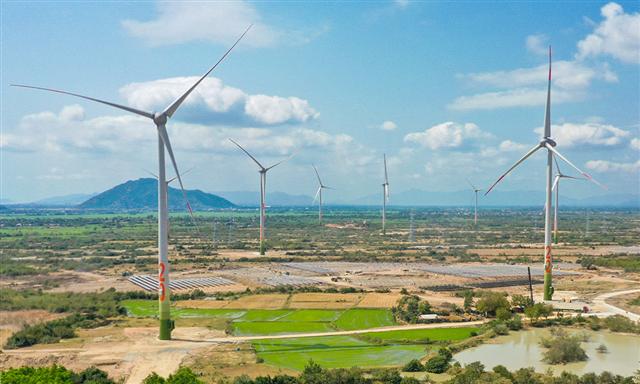From tiny service unit to regional energy supplier
From tiny service unit to regional energy supplier
From having only one small power plant with a low installation capacity that generated electricity for only a few areas, Laos has now become a major electricity generator and supplier in the region.
The Lao energy sector expects to continue its sharp growth at an average of about 30 percent annually from 2016 to 2020, according to a recent report of the Ministry of Energy and Mines.
The sector will achieve this large expansion because there are currently 21 power plant projects under construction which will complete and commence energy generation within this period adding an installed capacity of about 3,492 gigawatts , the report said.
The ministry also plans to continue to promote or support another nine power plant projects of the government that are under studies by Electricite du Laos (EDL) and some 20 joint investment projects of independent power producers (IPPs) that will have power development agreements with the government in the near future.
So far Laos has 25 commissioned power plants generating energy for both local and export use with an installed capacity of 3.244 gigawatts. This number does not include small scale plants that have instal led capacity lower than 1MW.
The ministry reported that total electricity generation was about 15.461 billion kWh, exceeding expectations by 6.98 percent in fiscal year 2013-14. It also represented a 10.44 percent increase compared to the previous fiscal year.
Power generation in 2014-15 will be at least 15.659 billion kWh because new supplies will come from a recently completed hydropower plant and another one which will start generating next year.
Under current arrangements the generated energy is for both local supply and export to Thailand, Vietnam and Cambodia.
The sector also has the potential development of an electricity grid linking Laos and Singapore and trading in electricity is possible as Thailand and Malaysia would also benefit from the project.
Laos will push for the acceleration of energy integration under the Asean Power Grid (APG) to address the imbalance in the distribution of power-generating resources in the region.
APG aims to connect countries with surplus power generation capacity to those who face a deficit. The intention is to link up power lines in the 10 Asean nations by 2020.
At the 29th Asean Ministers on Energy Meeting held in Brunei in 2011, the Energy and Mines Minister Mr Soulivong Daravong highlighted that Laos can help Asean countries to reduce their use of fossil fuels, which are the main source of greenhouse gas emissions, and importantly can also help Asean to stabilise its power supply.
The energy sector is one of the most important business units in the public economic system. During the 1960s, the Lao electrical sector was merely one small service unit, according to a report from EDL.
Prior to the revolution in Laos, the energy sector was merely this small service unit which could provide people with power for lighting for only 2-3 hours per day in the evening and then only in Vientiane and a few other urban areas.
Before the revolution in 1975, there were only three hydropower plants around the country with a combined installed capacity of 40MW.
In Vientiane there was a petrol driven generator which could produce 10MW of power, providing around 241 million kWh annually to more than 10,000 households, EDL's report noted.
The ministry stated that the country also had only one small scale power plant, Xelabam, with an installed capacity of 5MW, that was able to generate only 21GWh annually for some areas in Champassak province in 1969.
In 1970 the Nam Dong power plant began operation in Luang Prabang province generating 1MW or 5GWh per year for local consumption.
In 1971 the first phase of the Nam Ngum 1 hydropower construction project in Vientiane province was completed with an installed capacity of 30MW, which has now been expanded to 155MW.
In addition, there were also network systems and electrical generators being run on petrol in some large towns in Luang Prabang, Khammuan, Savannakhet and Champassak provinces.
On the right path for economic development and, as planned by the government, to be based on the development of a power sector as a focus for the stimulation of national economic development, the energy sector was built up from ground zero when there was only primitive technology available and very limited funding at its disposal but they managed to work successfully through those hard times, step by step.
The policies and strategies related to the development of electric power, especially the hydroelectric power development laid down by the government, are right. Hydroelectric power development which relies totally on natural water resources is very suitable for the country and is to be used as the economic basis for transforming the country into a modern, industrialised nation.
The development of an electrical industry is an important base, amongst other sectors, in national economic development and consistent with steps forward in socialisation. The government stated policy to promote, encourage and invest strongly is based on the mandates given to EDL to take on the central role and duty for actual implementation.
Laos will try to have a total installed capacity of about 12 gigawatts by 2025, the ministry's report noted.
Energy and Mines Deputy Minister, Mr Viraphonh Viravong, said at a meeting in April that the rich water resource of the Mekong River and its tributaries gives Laos the potential to develop more than 25 gigawatts .



